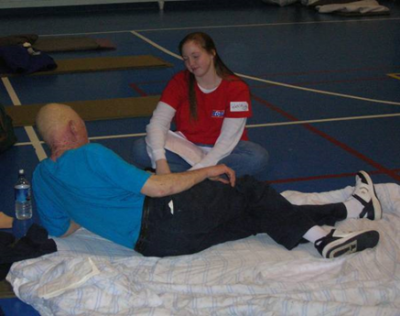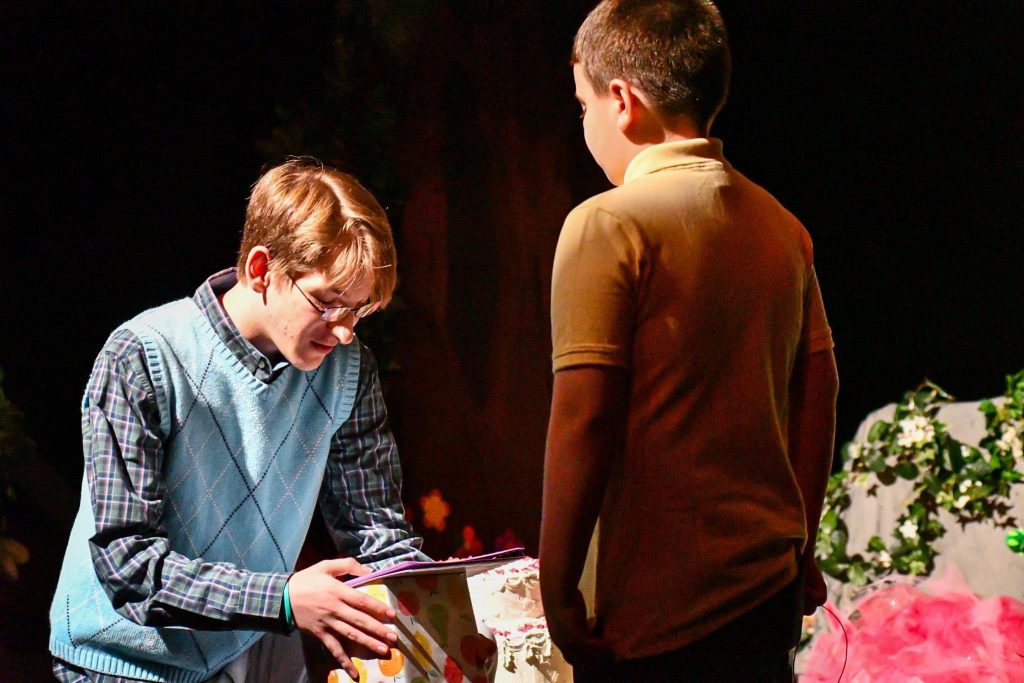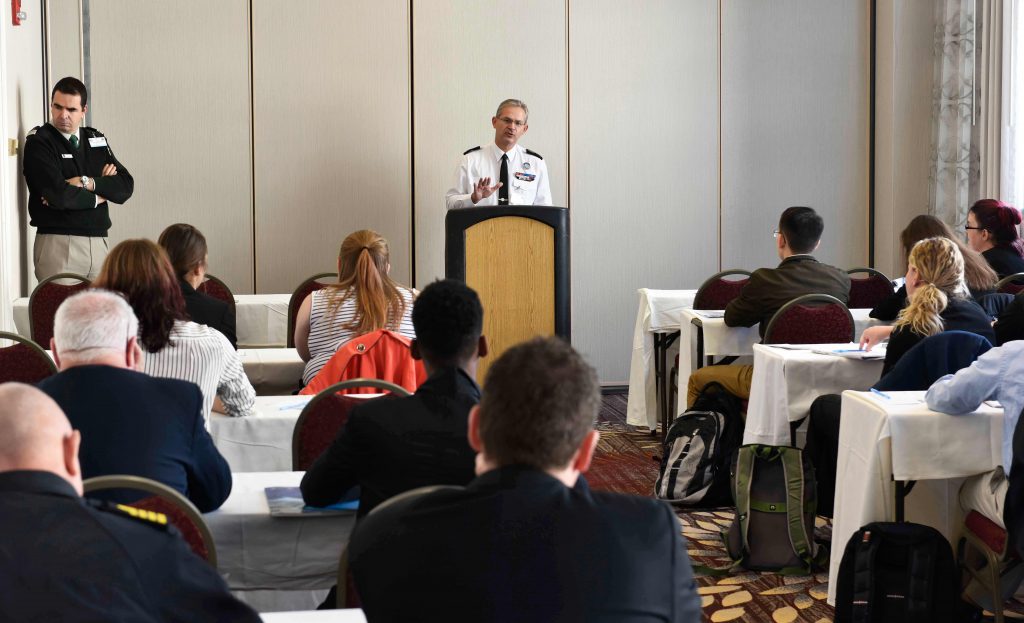Taken when the project was active, a student talks with a guest.
Kathy Stolley|Courtesy
For ten years, Virginia Wesleyan’s CMAC became a week-long shelter for people without permanent housing. From 2007 to 2016, Wesleyan’s Winter Homeless Shelter took place each winter session (now January term). This overnight shelter provided what many other shelters could not, such as haircuts, games and freshly cooked meals. This shelter gave people a place to stay and students a place to learn about how to help others through service.
Alumni Felecia Kiser and Nuni Rae started the shelter, which was paired with a service learning course taught by Dr. Kathy Stolley, professor of Sociology and Robin Takacs, adjunct faculty. Kiser and Rae were sophomores working for the Office of Community Service (now Wesleyan Engaged) when they started the shelter. The students began their service by distributing sandwiches to homeless people on the streets, but they aimed for longevity.

Volunteers serving food at the shelter.
Dr. Kathy Stolley|Courtesy
“They were working on building something sustainable; they first came up with the midnight sandwich runs, then they came up with the idea for the shelter,” Stolley said.
The project received funding from the PORTfolio program, which was directed by the now-retired professor, Dr. Larry Hultgren. As a program dedicated to engaged learning and service learning, many students and staff involved volunteered at local shelters and churches.
“The idea was, ‘let’s try to do this on our campus,’ because it was difficult for some of the churches we were visiting to do this. Some were not able to do it,” Hultgren said.
During the winter, there is an increased need for shelters to keep people warm, safe and off the streets which lined up with winter session classes. “When is there more availability for service on campus than winter session?” Takacs said.
Stolley and Takacs said that many members of the university staff and administration were apprehensive about the shelter, and towards the people in the shelter, but that many students went in with an open mind and were able to connect with the guests. “They really tried to make them feel welcome,” Stolley said, later adding, while referring to the shelter guests, “a lot of them joked that they were coming back to college.”
As students and staff interacted with the guests, it helped them to humanize homeless people. Many people avoid even interacting with homeless people, but the experience of the shelter created a bridge between two distanced social groups. “These aren’t people who were listened to very often,” Stolley said.
Although the lecture portion of the course that went with the shelter did cover statistics, it emphasized a more personable understanding of homeless people.

A shelter guest playing piano as guests and volunteers sing.
Dr. Kathy Stolley|Courtesy
“We always talked about leaving your stereotypes at the door,” Takacs said. Along with providing a place to sleep and a hot plate of food for the guests, student and staff volunteers also played basketball, played music and got to know the guests. “There are real people behind these numbers,” Stolley said, reflecting on the experiential learning that students had, allowing them to break down stereotypes and inhibitions towards homeless people they may have previously held.
Long lasting experiences were made with guests, especially those who returned year after year. Seeing people return was a bittersweet experience for those running the shelter.
“Every year, we liked to see people return, but in our hearts, we wanted to see them with a more permanent housing solution,” Takacs said.
One guest who returned multiple years in a row played the piano for the guests and volunteers at the homeless shelter. His playing was recorded in a documentary by Dr. Stuart Minnis. Stolley recalled this person as one of the most memorable that she encountered during the shelter. Another guest who helped to organize and advocate for other homeless people ended up getting housing, only to land on the streets again five years later.
These experiences at the shelter affected those who took part immensely, both the volunteers and the guests. “The word that students and staff used was ‘transformative,’” Stolley said, noting that many of the students who took part in the shelter went into “helping professions” inside and outside of other shelters. One year, Stolley received a letter from a previous guest of the shelter saying, “it’s shelter season,” and thanking her for the amazing experience they had in the shelter.
After they heard about the shelter, universities approached Stolley and Takacs asking how they were able to do the shelter, in hopes of doing a similar project. The shelter has been used in studies on service learning and applied sociology.
Despite many guests having great experiences with the shelter, Stolley emphasized that things like shelters are a temporary fix to a society-wide problem of wealth disparity. “Shelter is a band-aid, shelter doesn’t fix the problem,” Stolley said.
After Virginia Wesleyan facilities changed and more permanent homeless shelters were added to the area, the course pivoted in 2016 to students volunteering at off-campus homeless shelters until the course ended in 2024.
With the program running for 18 years, it saw a level of longevity that many projects do not. Stolley and Takacs attributed this to student interest in the shelter, and without the investment in large, long-term goals, student interest may weaken. They elaborated that student interests may decline when there are only small projects. “Looking for quick and easy service projects, the buy-in doesn’t happen,” Takacs said, adding later, “There was something organic that happened.”
The legacy of the shelter continues today through its use in studies, replicated projects at other universities, as well as through Wesleyan students still advocating for homeless people today through on-campus organizations like Students Against Continued Homelessness (SACH) and other outlets.
By Aiden Croghan


